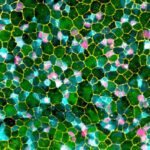Lien vers Pubmed [PMID] – 25976648
Glia 2015 Aug;63(8):1406-28
The adult central nervous system (CNS) of the zebrafish, owing to its enrichment in constitutive neurogenic niches, is becoming an increasingly used model to address fundamental questions pertaining to adult neural stem cell (NSC) biology, adult neurogenesis and neuronal repair. Studies conducted in several CNS territories (notably the telencephalon, retina, midbrain, cerebellum and spinal cord) highlighted the presence, in these niches, of progenitor cells displaying NSC-like characters. While pointing to radial glial cells (RG) as major long-lasting, constitutively active and/or activatable progenitors in most domains, these studies also revealed a high heterogeneity in the progenitor subtypes used at the top of neurogenic hierarchies, including the persistence of neuroepithelial (NE) progenitors in some areas. Likewise, dissecting the molecular pathways underlying RG maintenance and recruitment under physiological conditions and upon repair in the zebrafish model revealed shared processes but also specific cascades triggering or sustaining reparative NSC recruitment. Together, the zebrafish adult brain reveals an extensive complexity of adult NSC niches, properties and control pathways, which extends existing understanding of adult NSC biology and gives access to novel mechanisms of efficient NSC maintenance and recruitment in an adult vertebrate brain.

